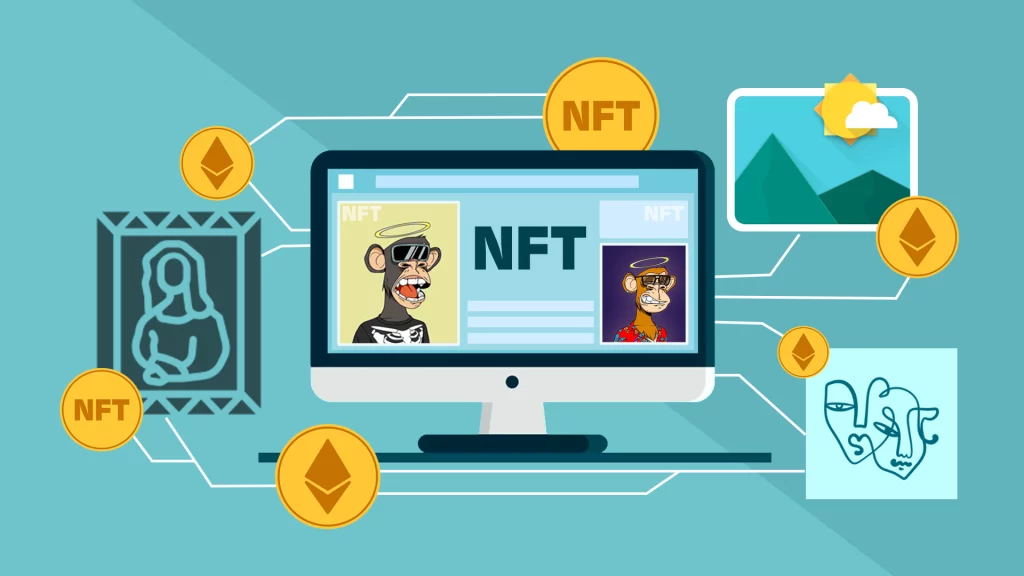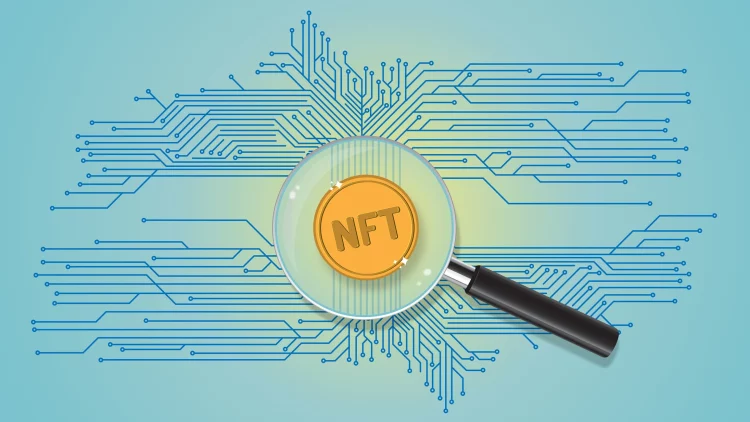Introduction
The emergence of Non-Fungible Tokens (NFTs) has revolutionized the digital asset landscape, unlocking new possibilities for creators, investors, and collectors. NFTs have bridged the gap between digital ownership and blockchain technology, transforming industries such as art, entertainment, gaming, and even real estate. Yet, despite their remarkable growth and the enthusiasm surrounding them, NFTs have come under scrutiny for their environmental impact.
As the popularity of NFTs skyrockets, so too does their energy consumption. NFTs are typically minted and traded on blockchain networks like Ethereum, which, until recently, relied on the energy-intensive Proof of Work (PoW) consensus mechanism. This has led to significant concerns about the carbon footprint of NFT transactions, especially when compared to traditional financial systems or even other blockchain platforms that utilize more energy-efficient technologies.
This article delves into the environmental challenges that NFTs pose, the underlying reasons for their energy consumption, and potential solutions to mitigate these impacts. We will explore the carbon footprint of NFTs, the role of blockchain in contributing to environmental issues, and the shift toward more sustainable practices, including the transition to Proof of Stake (PoS) systems and the adoption of renewable energy in NFT mining and minting processes.
The Rise of NFTs and Their Environmental Impact
What Are NFTs?
Non-fungible tokens (NFTs) are unique digital assets that represent ownership or proof of authenticity of a specific item, whether it be digital art, music, virtual real estate, collectibles, or other forms of intellectual property. Unlike traditional cryptocurrencies like Bitcoin or Ethereum, which are interchangeable, NFTs are non-fungible, meaning each token has distinct value and cannot be substituted for another.
NFTs rely on blockchain technology, which acts as a decentralized ledger that records every transaction involving the token. Popular platforms for minting and trading NFTs include Ethereum, Binance Smart Chain, and others, with Ethereum currently being the most widely used blockchain for NFTs.
While the growth of the NFT market has introduced new revenue streams for creators and investors, it has also raised environmental concerns due to the high energy consumption of blockchain networks, particularly those based on Proof of Work (PoW) consensus mechanisms.
Energy Consumption and Environmental Footprint
Blockchain technology, particularly on PoW systems like Ethereum, is often associated with high energy consumption. Each NFT transaction, including minting, buying, and selling, requires substantial computational power to validate and confirm transactions. This process involves miners using powerful computers to solve complex mathematical problems to add a new block to the blockchain.
The energy-intensive nature of PoW systems has led to concerns about the carbon footprint of blockchain networks, with NFTs being a significant contributor. According to a study by the Cambridge Centre for Alternative Finance, Ethereum, at its peak, consumed more energy annually than some small countries, with carbon emissions equivalent to those of entire nations. A significant portion of the energy used by Ethereum is sourced from non-renewable fossil fuels, further exacerbating the environmental impact.
It is estimated that minting an NFT on Ethereum can generate a carbon footprint comparable to the emissions of a traditional car over the course of several hundred miles. While the environmental cost of a single NFT might appear small, when scaled to millions of transactions per day, the cumulative impact becomes much more significant.
The NFT Hype and Increased Demand
As NFTs have surged in popularity, so too has the demand for blockchain resources. Artists, musicians, game developers, and brands are flocking to the NFT space to tokenize their digital assets, resulting in higher transaction volumes. This increase in activity places more strain on blockchain networks, particularly those that rely on energy-intensive mining.
For instance, Ethereum’s NFT marketplace saw billions of dollars in sales in 2021, prompting more energy consumption to facilitate the rapid increase in transactions. This trend has raised alarms about the long-term sustainability of the NFT ecosystem if energy consumption continues at its current pace.
Why Do NFTs Consume So Much Energy?
Proof of Work (PoW) and Its Environmental Consequences
The main reason for the high energy consumption of NFTs lies in the underlying Proof of Work (PoW) consensus mechanism, which is used by Ethereum and other blockchains. In PoW, miners compete to solve complex mathematical puzzles in order to validate transactions and add new blocks to the blockchain. This process, known as mining, requires substantial computational power, which in turn consumes large amounts of electricity.
Miners are incentivized to use the most powerful and energy-hungry equipment to outpace others in solving the puzzles, creating a competitive mining race that drives up electricity demand. The result is that PoW systems like Ethereum can consume more energy than some entire countries, with a significant portion of that energy being drawn from non-renewable sources.
NFT Minting and Gas Fees
Gas fees refer to the transaction costs associated with using the Ethereum network, including minting an NFT. When users mint, buy, or sell NFTs, they must pay gas fees to compensate miners for validating and executing their transactions. The higher the demand for transactions, the higher the gas fees and, consequently, the energy consumption required to process those transactions.
As more individuals and companies enter the NFT space, the demand for Ethereum’s network resources increases, driving up gas fees and, by extension, the network’s overall energy usage. This amplifies the environmental challenges posed by NFTs, as each transaction becomes more energy-intensive.

NFT Marketplaces and Environmental Impact
The majority of NFT marketplaces, such as OpenSea, Rarible, and SuperRare, operate on the Ethereum network, which means they are also contributing to the energy consumption associated with the minting, buying, and selling of NFTs. As these platforms grow in popularity, so does their environmental footprint.
While some marketplaces are beginning to explore more energy-efficient alternatives, the overall NFT ecosystem remains heavily reliant on energy-intensive blockchains. This issue is particularly pronounced when large numbers of high-value NFTs are bought and sold at high frequency, further exacerbating the environmental cost.
Transition to Sustainable Practices
As the NFT market continues to evolve, there is growing recognition of the need to transition toward more energy-efficient and sustainable practices. The good news is that the blockchain industry is increasingly aware of its environmental impact, and various solutions are emerging to address these concerns.
1. Transition to Proof of Stake (PoS)
One of the most promising solutions for reducing the energy consumption of NFTs is the shift from Proof of Work (PoW) to Proof of Stake (PoS). Ethereum has announced plans to move to PoS with the Ethereum 2.0 upgrade, which aims to drastically reduce the network’s energy consumption.
In a PoS system, instead of miners using computational power to solve puzzles, validators are chosen to create new blocks based on the amount of cryptocurrency they hold and are willing to “stake” as collateral. This process is far more energy-efficient, requiring significantly less computational power.
Ethereum 2.0 is expected to reduce the network’s energy consumption by over 99%, addressing one of the key environmental concerns associated with NFTs. Other blockchains that use PoS, such as Tezos and Flow, have already emerged as alternatives to Ethereum for NFT transactions, offering a more sustainable option for creators and buyers.
2. Adoption of Renewable Energy Sources
Another strategy to mitigate the environmental impact of NFTs is for miners and blockchain networks to adopt renewable energy. Many blockchain platforms and mining operations are already exploring the use of clean energy sources such as solar, wind, and hydroelectric power to reduce their carbon footprint.
For example, some mining operations in regions with abundant renewable energy resources, like Iceland and Canada, have started using green energy to power their mining rigs. Similarly, blockchain networks can partner with renewable energy providers to offset the carbon emissions associated with NFT transactions.
Several blockchain projects have already committed to sustainability, including Chia, which uses a Proof of Space and Time consensus mechanism that is much less energy-intensive than PoW. Flow is another example, as it uses a PoS system and is designed to be more environmentally friendly by design.
3. Carbon Offsetting and Environmental Certification
In addition to reducing energy consumption, some NFT platforms and artists are taking steps to offset the carbon footprint of their NFTs. This can involve purchasing carbon credits or investing in sustainability projects that help mitigate environmental damage. Some platforms now offer buyers the option to offset the carbon footprint of their transactions when purchasing NFTs.
Artists and NFT creators can also choose to participate in environmental certification programs that measure and reduce the environmental impact of their work. By promoting sustainability and environmental responsibility, these initiatives help encourage broader adoption of green practices within the NFT space.
Conclusion
The environmental concerns associated with NFTs are undeniably significant, but they are not insurmountable. As the industry grows, it is essential for both regulators and market participants to prioritize sustainable practices and make conscious efforts to mitigate the environmental impact of blockchain networks.
The shift from energy-hungry PoW systems to more efficient PoS mechanisms, the adoption of renewable energy, and the implementation of carbon offsetting measures will be crucial in ensuring that NFTs can continue to thrive without causing irreparable harm to the environment.
With growing awareness of these challenges, the NFT industry has an opportunity to set a global example for how emerging technologies can evolve in an environmentally responsible way, paving the way for a more sustainable future for digital assets.

















































